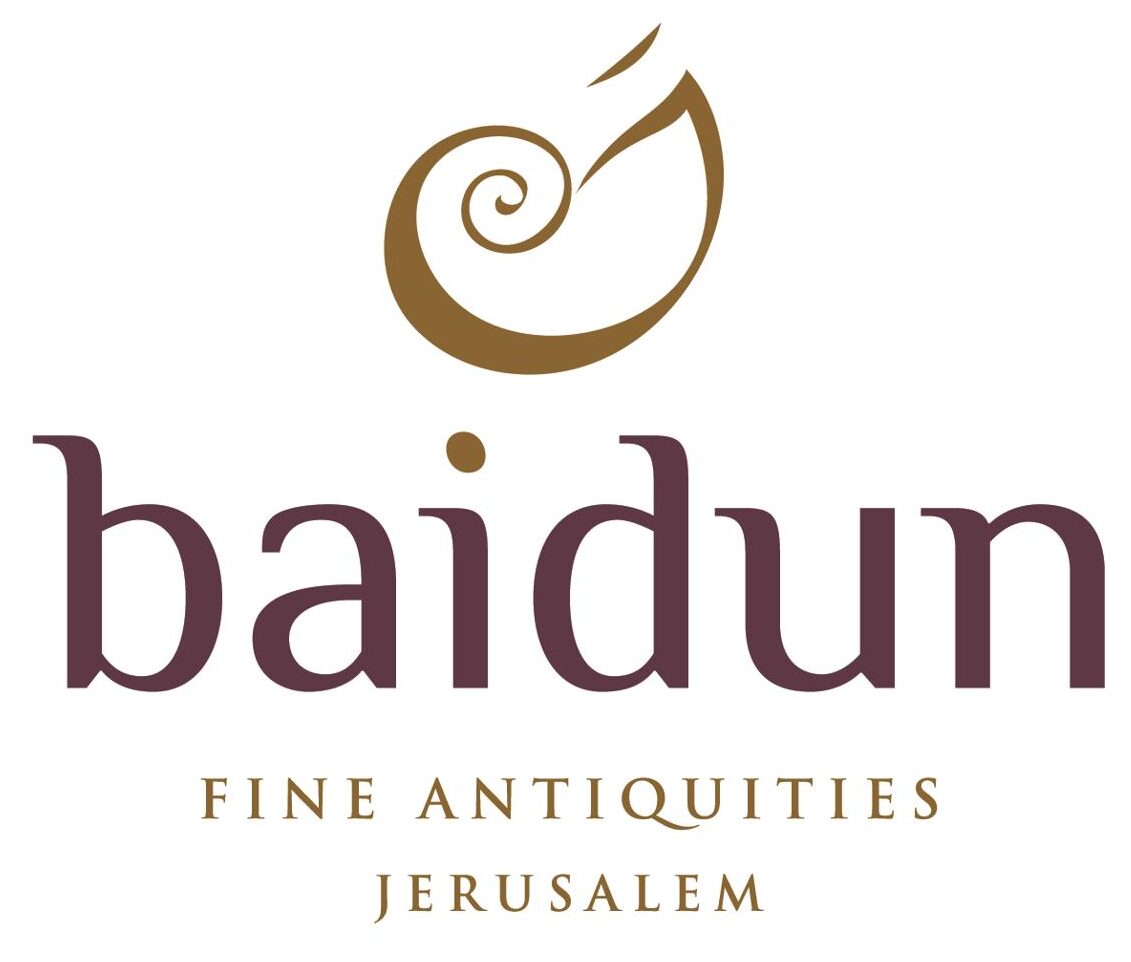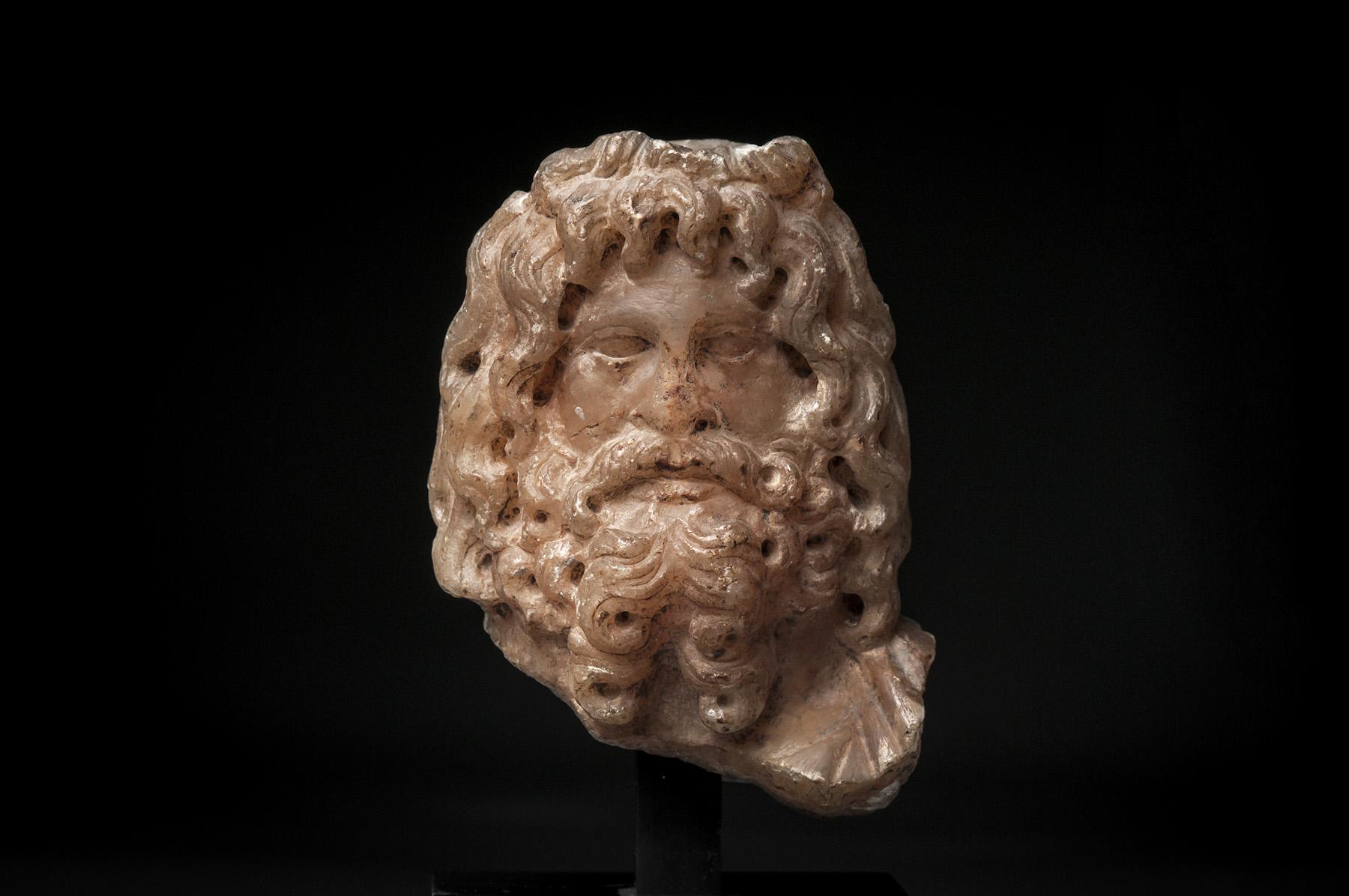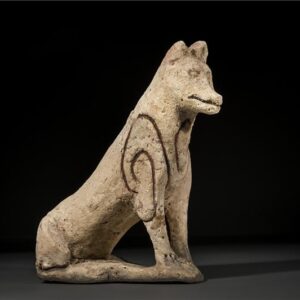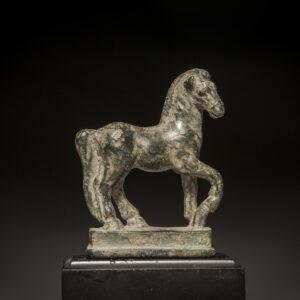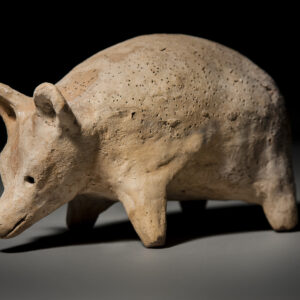Alabaster head of Greek god Serapis enveloped in thick hair yet with detailed facial features. Lavish curls of the beard and head show deep rivets cut into the soft pink alabaster. The beard itself has been manicured into a distinctively regal fashion. Some of the body remains, with folds from the figurine’s robes seen on the remaining lower neck and upper shoulder.
The most famous representation of the deity is that by Bryaxis, a namesake of the famous sculptor who is credited with creating the sculptures on the north side of the tomb of Mausolus, one of the wonders of the ancient world. Representations of Serapis are uncommon. Ptolemy Soter commissioned the god in order that the native population of Egypt – who already had an extensive pantheon of deities – and the occupying forces could have a common ritual focus. The god therefore shared a group of attributes common to Greeks (physically robust, bearded male) and to Egyptians (attire and accessories): he was originally shown seated, with a sceptre of power, wearing a grain measure on his head, accompanied by a snake (identified with the Egyptian royal uraeus) and with a dog (originally held to be Anubis, later Cerberus) by his side. The cult of Serapis was banned in 391 C.E. and many of the sculptures destroyed. This is therefore a rare survival and a notable piece of ancient art.



